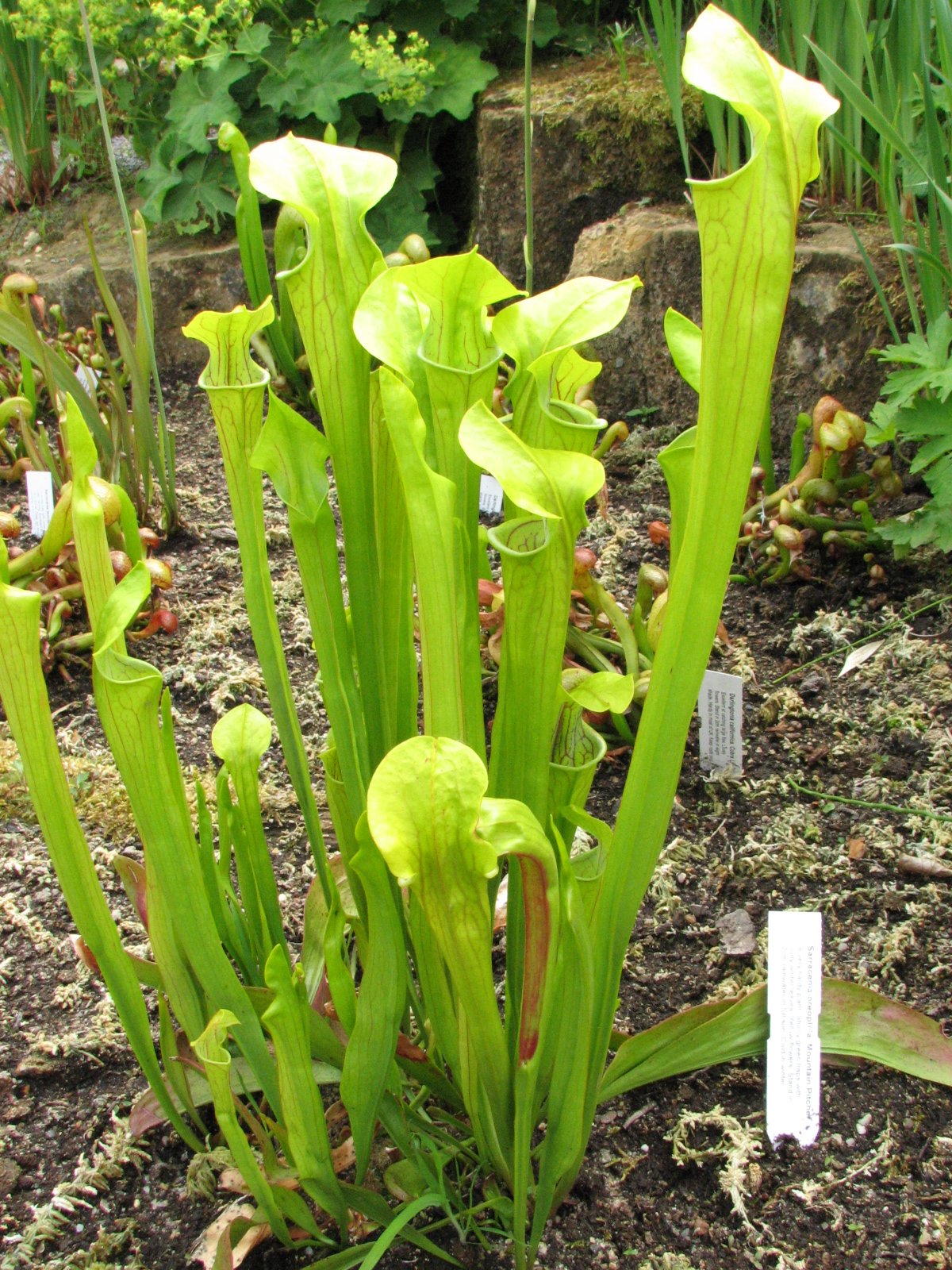Size
Ultimate height
0.5–1 metresTime to ultimate height
2–5 yearsUltimate spread
0.1–0.5 metresGrowing conditions
Moisture
Moist but well–drained, Poorly–drainedpH
Acid, NeutralColour & scent
| Stem | Flower | Foliage | Fruit | |
| Spring | Yellow | Green Red | ||
|---|---|---|---|---|
| Summer | Green Red | |||
| Autumn | Green Red | |||
| Winter | Green Red |
Position
- Full sun
Aspect
South–facing or West–facing
Exposure
Sheltered Hardiness
H3Botanical details
- Family
- Sarraceniaceae
- Native to GB / Ireland
- No
- Foliage
- Evergreen
- Habit
- Clump forming, Columnar upright, Matforming
- Genus
Sarracenia can be evergreen or herbaceous, rhizomatous perennials with rosettes of phyllodes mostly modified into insect-catching tubular pitchers with hooded lids, and solitary, nodding cup-shaped flowers in spring
- Name status
Correct
- Plant range
- SE USA
How to grow
Cultivation
Grow under glass, keep moist in full light with shelter from hot sun. Use an acidic potting medium with moss. In winter, keep slightly drier, cool and well ventilated. Irrigate with lime-free water. They will generally lose some of their leaves over winter during a period of dormancy. Most Sarracenias can be grown outside in milder parts of the country, but care should be taken in colder conditions. Choose a position in full sun, sheltered from cold winds. See carnivorous plant cultivation
Propagation
Propagate by seed in spring or by division
Suggested planting locations and garden types
- Patio and container plants
- Conservatory and greenhouse
Pruning
No pruning required. Remove dead leaves as necessary
Pests
May be susceptible to scale insects, mealybugs, aphids and tortrix moth
Diseases
Generally disease-free
Love gardening
Sign up to receive regular gardening tips, inspiration, offers and more
View our Privacy Policy
Get involved
The Royal Horticultural Society is the UK’s leading gardening charity. We aim to enrich everyone’s life through plants, and make the UK a greener and more beautiful place.
